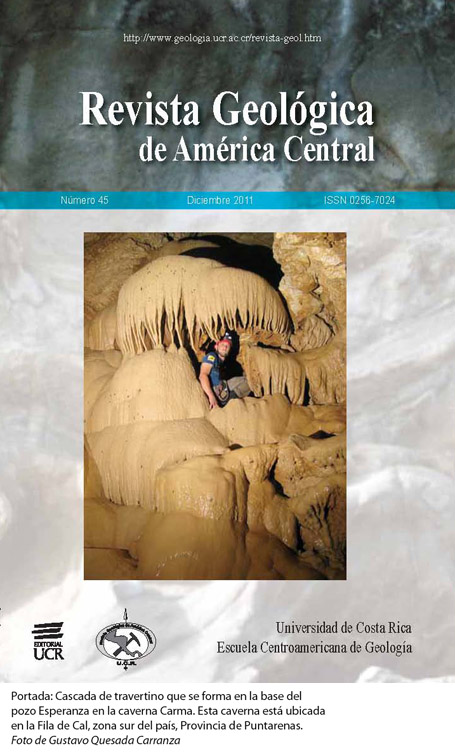Abstract
In Costa Rica the karstic phenomenon affects mainly carbonate rocks, constituting 0.85% of the country’s surface, with an approximate area of 431 km2. There are documented at least 9 episodes of carbonate de- position from the Late Cretaceous to Holocene, which include eleven stratigraphic units. These events are related to various geological-tectonic processes, changes in sea level, subsidence and changes in the sediment input. Ten karstic zones and four limestone sites have been defined: 1) North Pacific, 2) Tempisque, 3) South Zone, 4) Central Pacific, 5) Cabo Blanco and Malpaís, 6) Turrialba and Pacuare, 7) Talamanca, 8) Venado , 9) Central Valley, 10) Limón and the isolated karst areas: A) Garza, B) Cerro Huevo Frito, C)Cerro Morro and D) Playa Panama. These karstic features have morphologies which can be exo-karstic, including lapiaz, ‘mogotes’, karstic-towers, sinkholes and conical karst. The best known endokarstic phenomena are caves, in which it is common the development of speleothems. such as stalactites, stalagmites, columns, flowstones, draperies, calcareous pearls, etc. Serpiente Dormida (Sleeping Snake) cave is the deepest in the country, with -172 m, the longest is the Bruja - Rectangle - Tururún - Corredores system, with 3872 m in length. At least 258 caves in limestone have been registered, of which 41% have been mapped (100 caves). 88% of the caves in Costa Rica are found in karst areas of the Southern Zone (61%), Tempisque (17%) and Venado (10%), while the remaining 12% of caves are distributed in other karstic areas. These areas have special environmental and hydrogeological conditions that must be taken into account as to infrastructure development, and could also be exploited by tourism.Comments
Downloads
Download data is not yet available.






